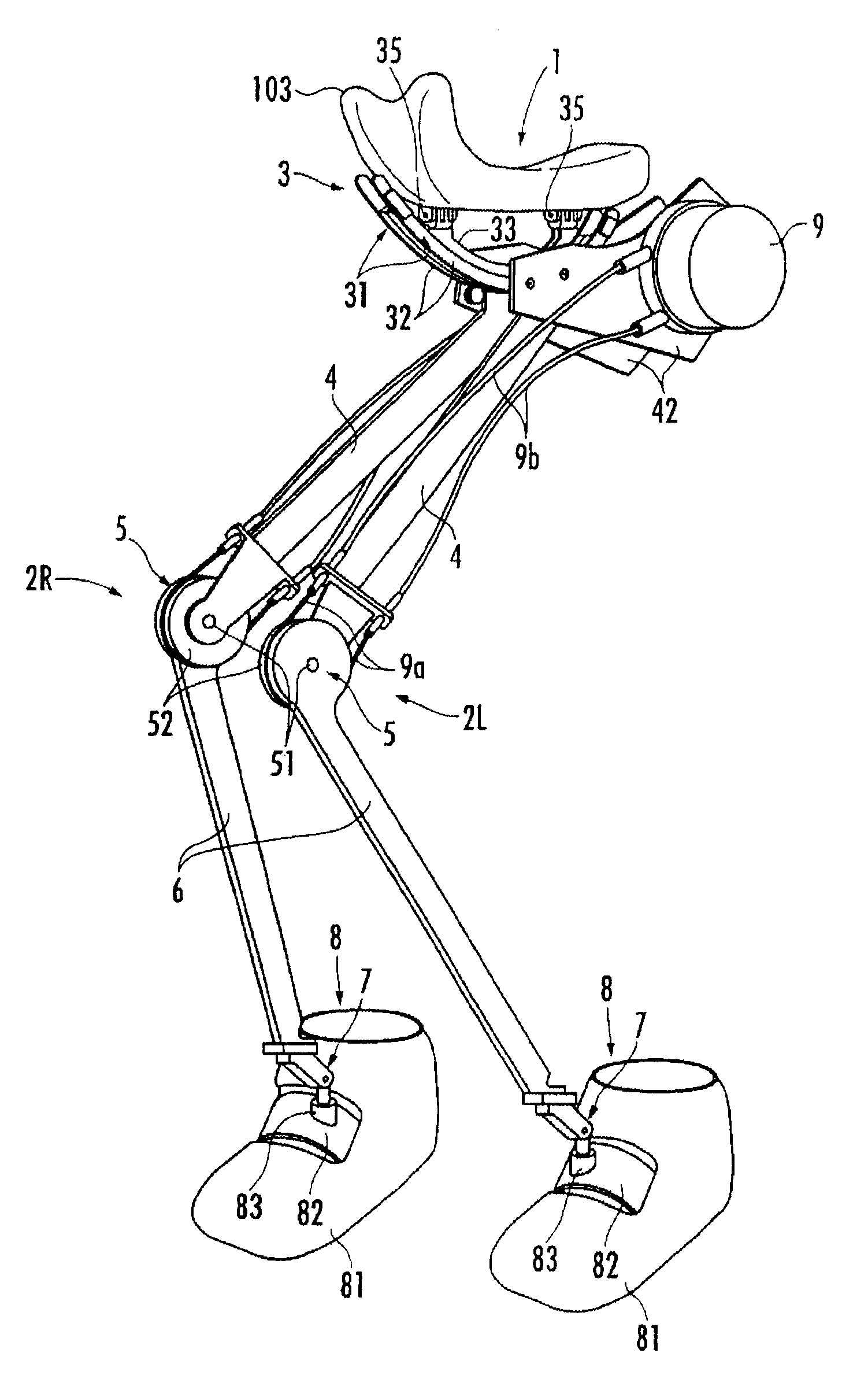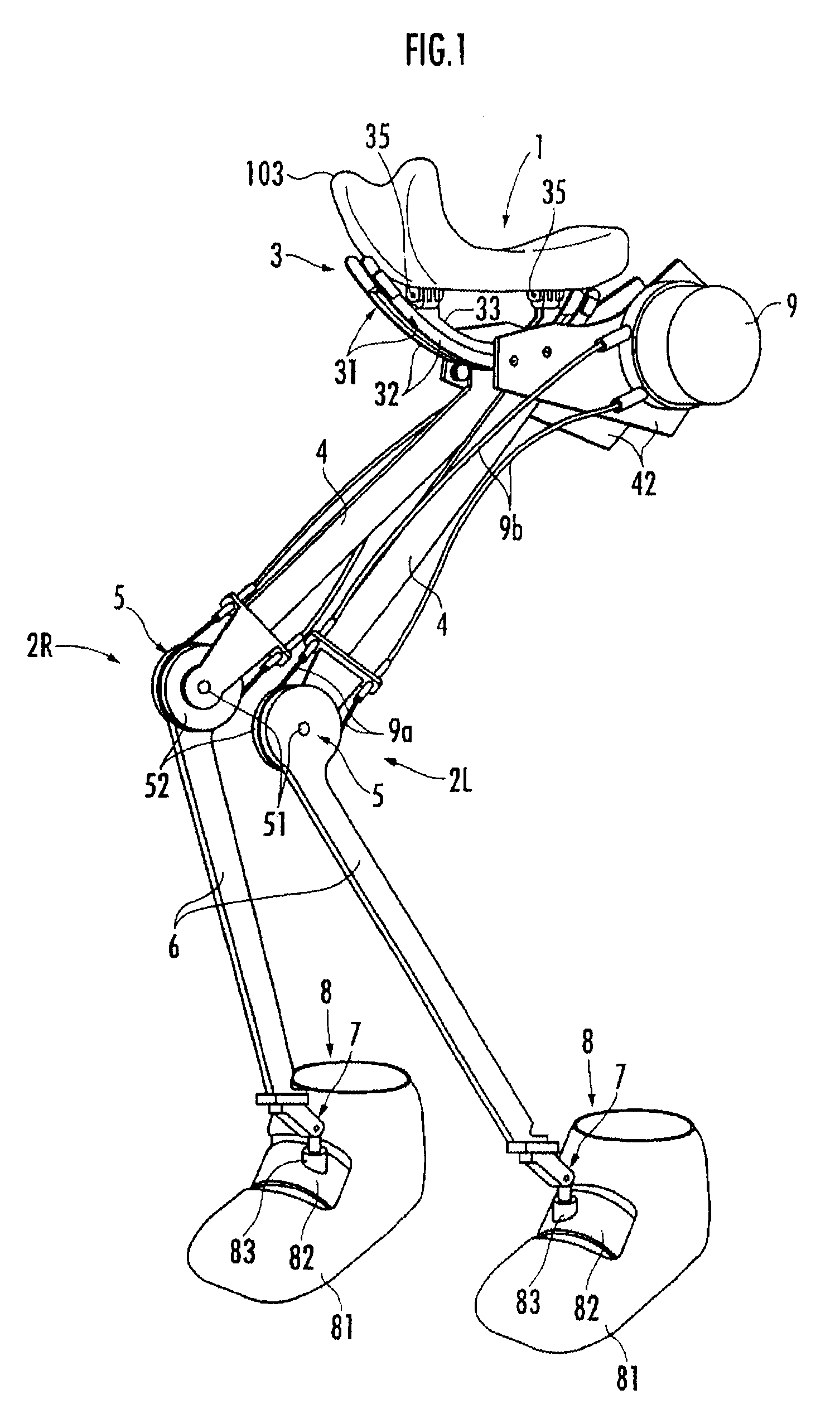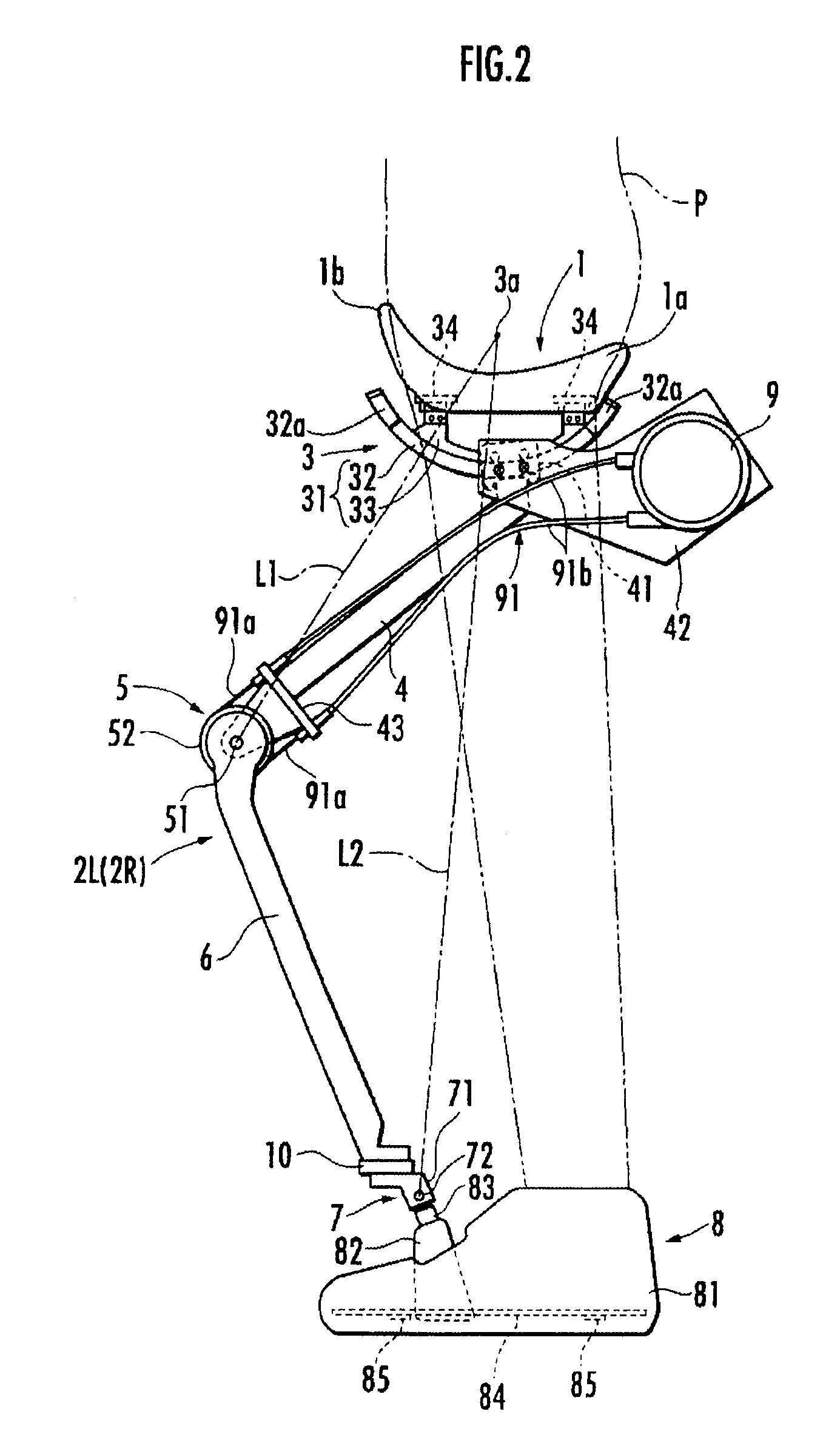Walking assistance device
a technology of assistance device and walking aid, which is applied in the field of walking assistance device, can solve the problems of affecting stability, affecting the stability of the seat, and causing the seat to push the soft hypogastric region, so as to prevent the yawing of the seat member, restrain the flexure, and increase the degree of elasticity in the longitudinal direction
- Summary
- Abstract
- Description
- Claims
- Application Information
AI Technical Summary
Benefits of technology
Problems solved by technology
Method used
Image
Examples
Embodiment Construction
[0020]The following will explain a walking assistance device in accordance with an embodiment of the present invention.
[0021]The walking assistance device illustrated in FIG. 1 to FIG. 3 is equipped with a seating member 1 constituting a seat on which a user P sits astride, and a pair of right and left leg links 2L and 2R as support members which support the seating member 1.
[0022]Each of the leg links 2L and 2R is constructed of a bendable / stretchable link equipped with a first link 4 connected to a first joint 3 provided on the lower surface of the seating member 1 and a second link 6 connected to the lower end of the first link 4 through the intermediary of a rotary second joint 5. Further, a ground contact member 8, which is attached to each of the right and left feet of the user, is connected to the lower end of the second link 6 through the intermediary of a third joint 7. Further, a drive source 9 for the second joint 5 is mounted on each of the leg links 2L and 2R. The drive...
PUM
 Login to View More
Login to View More Abstract
Description
Claims
Application Information
 Login to View More
Login to View More - R&D
- Intellectual Property
- Life Sciences
- Materials
- Tech Scout
- Unparalleled Data Quality
- Higher Quality Content
- 60% Fewer Hallucinations
Browse by: Latest US Patents, China's latest patents, Technical Efficacy Thesaurus, Application Domain, Technology Topic, Popular Technical Reports.
© 2025 PatSnap. All rights reserved.Legal|Privacy policy|Modern Slavery Act Transparency Statement|Sitemap|About US| Contact US: help@patsnap.com



